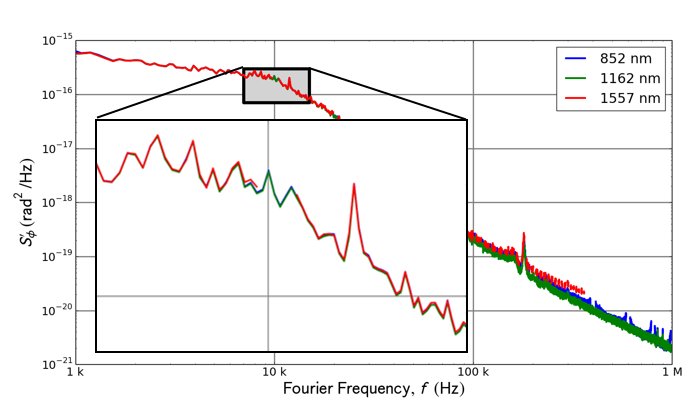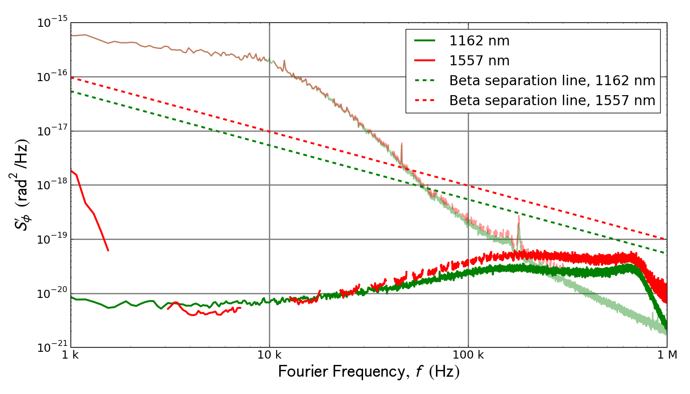Perfect lock to optical reference
Reduced comb equation fn = nfrep

The DFC is especially suitable for use with an optical reference like a narrow linewidth laser. If stabilized to such an optical reference the frequencies of the comb lines are tightly locked at 0 Hz through the DFG process and at a high optical frequency by the optical reference. Here, the CERO technology is at a clear advantage over the conventional f-to-2f approach where high frequency noise components of fCEO cannot be canceled.
Check out our paper “Characterization of a DFG comb showing quadratic scaling of the phase noise with frequency”, Optics Letters Vol. 41, Issue 8 (2016) by T. Puppe et al. and you will understand why the DFC CORE + is perfect for use with an optical reference.
Due to the intra-pulse DFG process fCEO is perfectly canceled for each pulse individually. The new comb equation only depends on the repetition rate, fn = n frep, and the phase noise of the DFG comb shows a pure quadratic scaling with the carrier frequency. T. Puppe et al. have shown that this is true to a remarkable degree. This textbook behavior can be seen in the figure 1, where we plot the phase noise of comb lines at wavelength more than 700 nm apart, scaled to the same carrier frequency. The inset shows that even the random noise structure of the simultaneously recorded traces is perfectly correlated.
This is proof of the exceptional coherence of all comb lines of the RF-locked DFC CORE +. Moreover, it shows that the origin of the DFG comb is truly at 0 Hz, anything acting on the DFC CORE + acts on frep, and there is no cross talk between the actuators for frep and fCEO (not even 1%).
When phase locked to an optical reference (DL pro stabilized to a linewidth < 1 Hz), the phase noise is suppressed by 45 dB to below the beta separation line. All comb lines inherit the linewidth of the optical reference with just one lock and only one optical reference.


